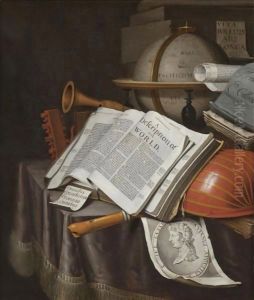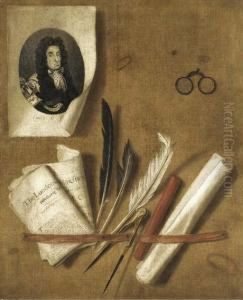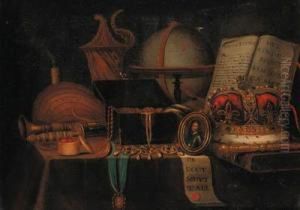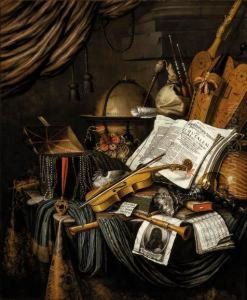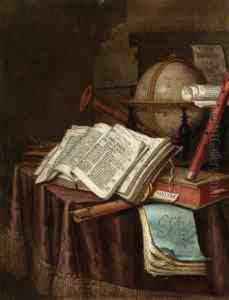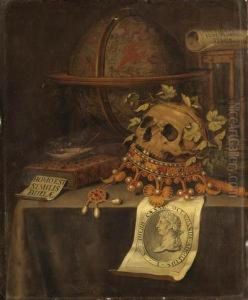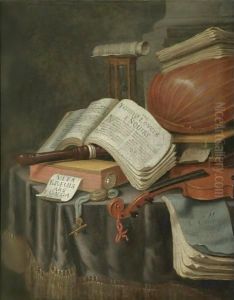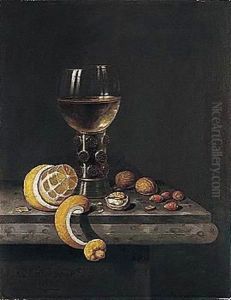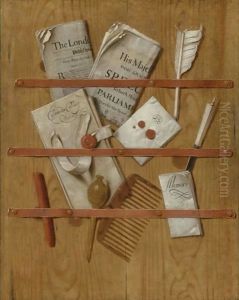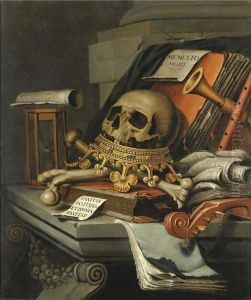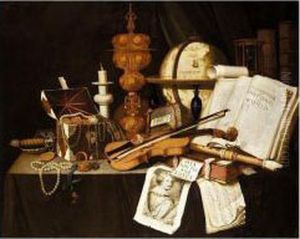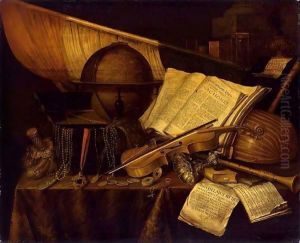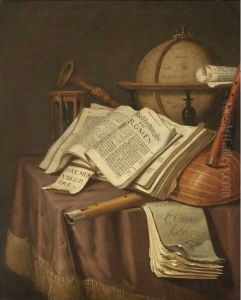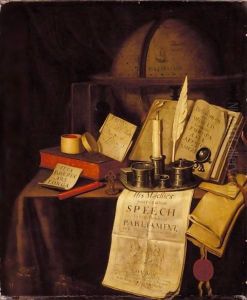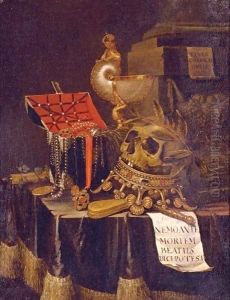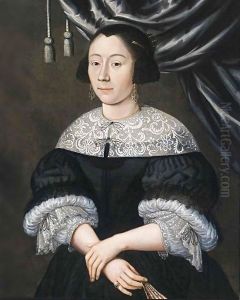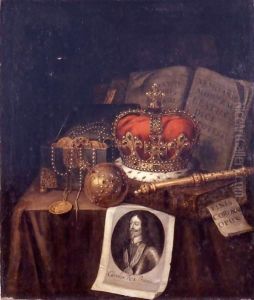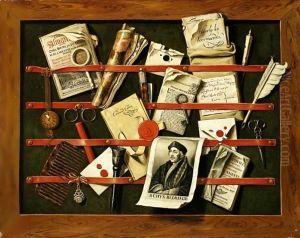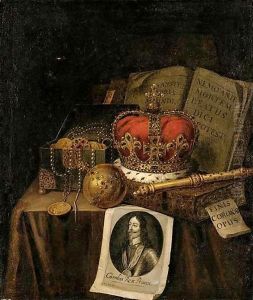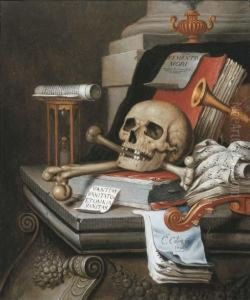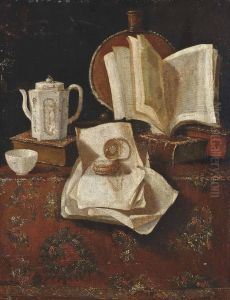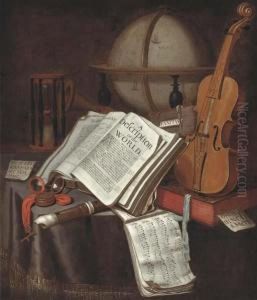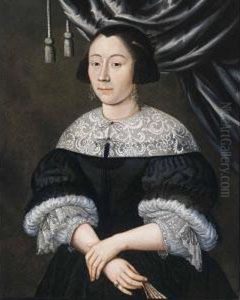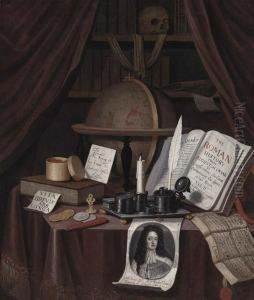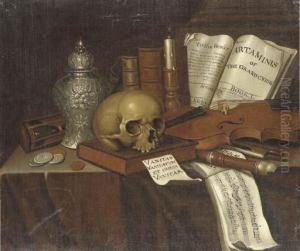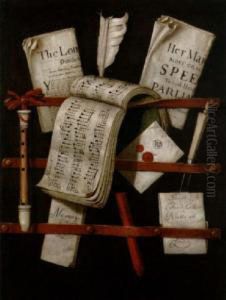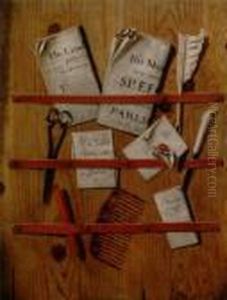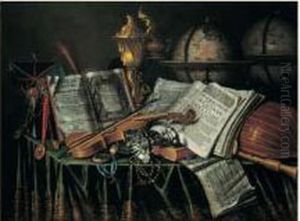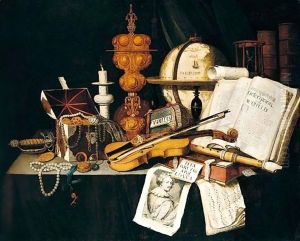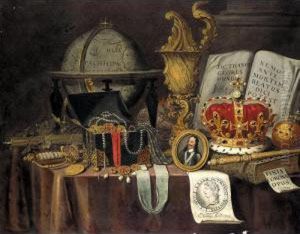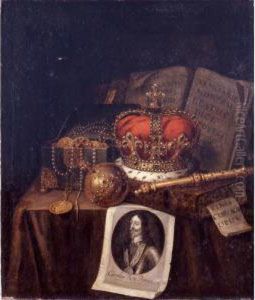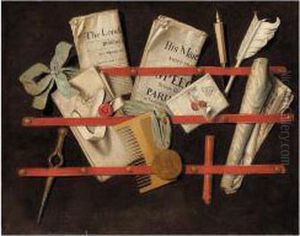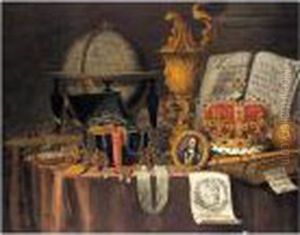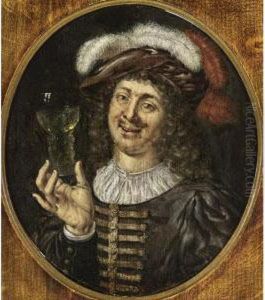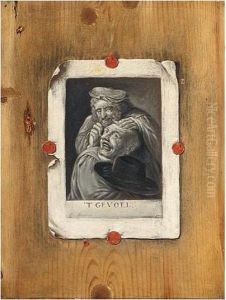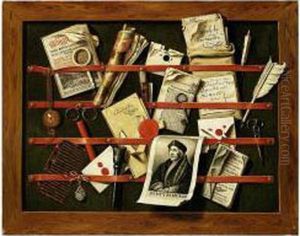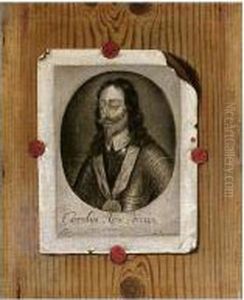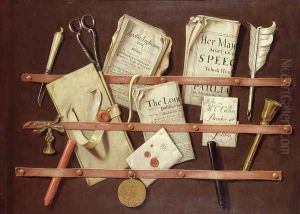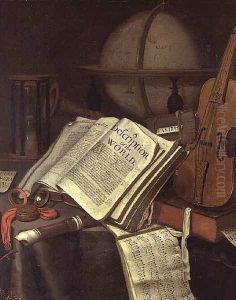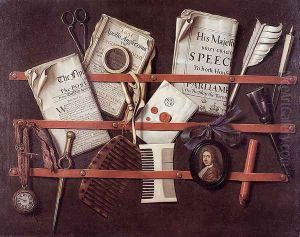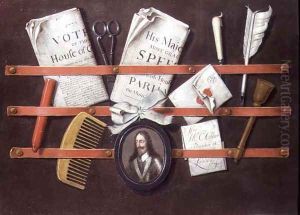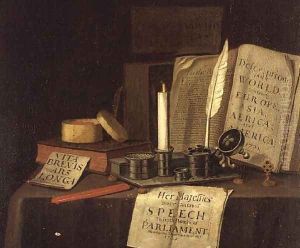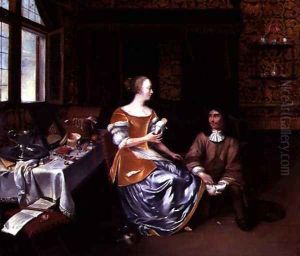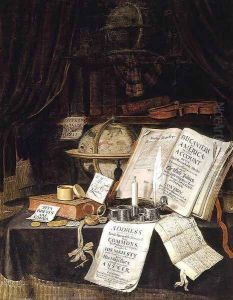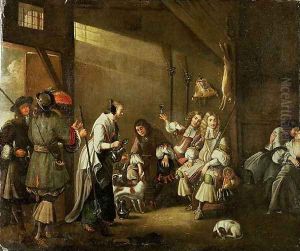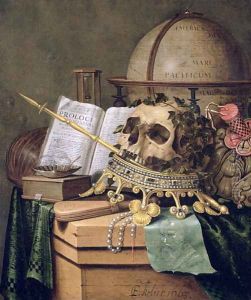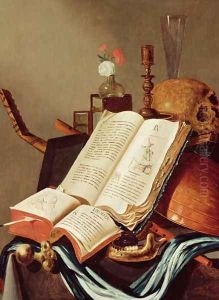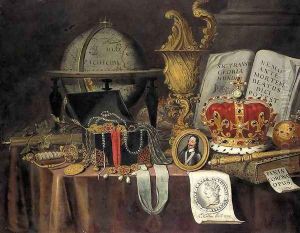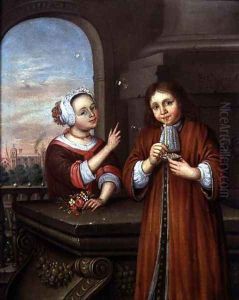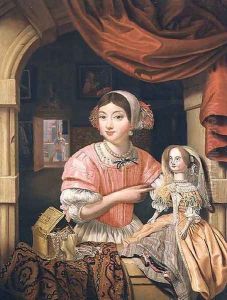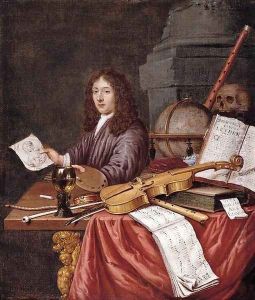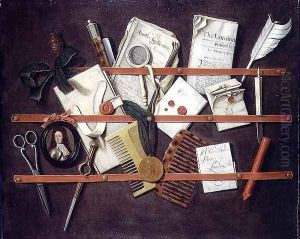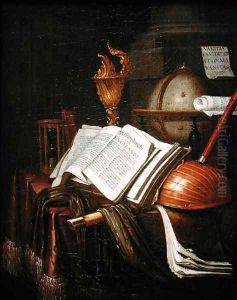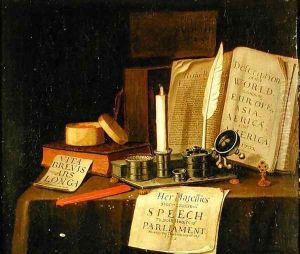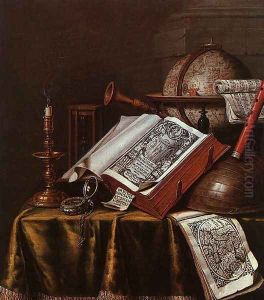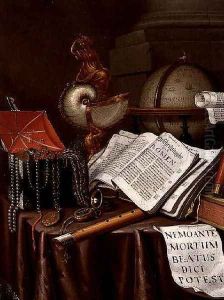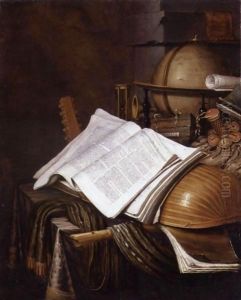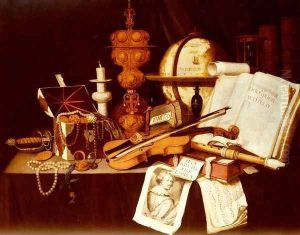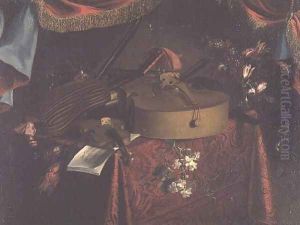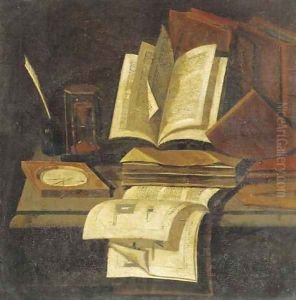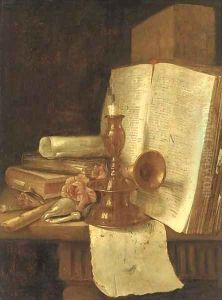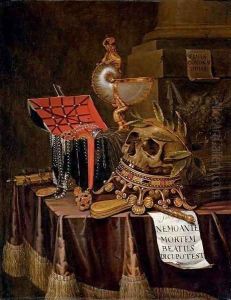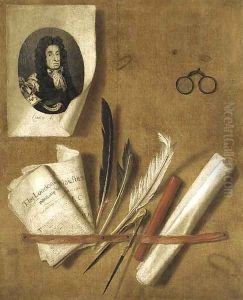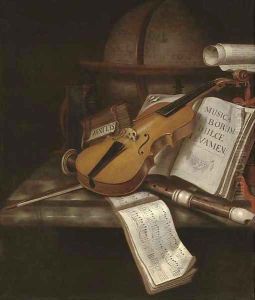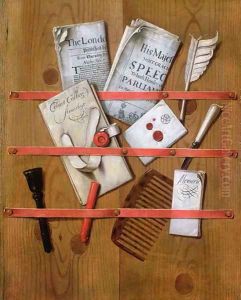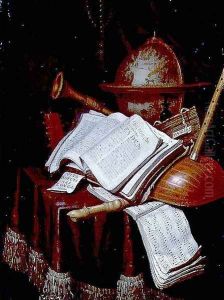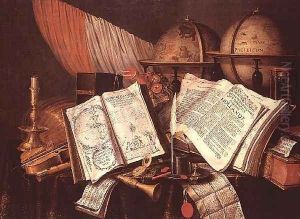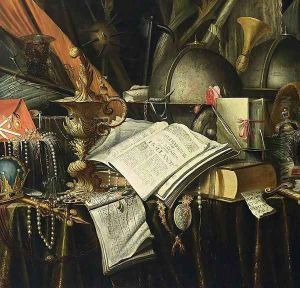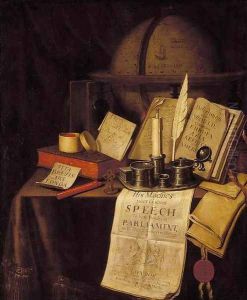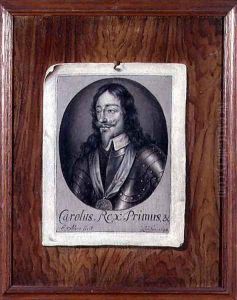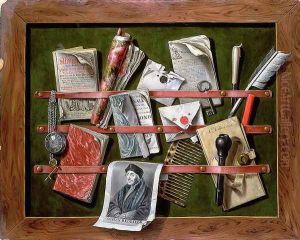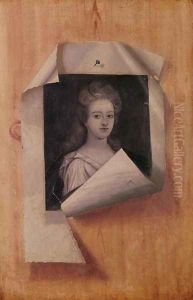Edwart Collier Paintings
Edwaert Collier, also known as Evert Collier, was a Dutch Golden Age painter who specialized in vanitas still life paintings and trompe-l'œil, an art technique that uses realistic imagery to create the optical illusion that depicted objects exist in three dimensions. Born in Breda, a city in the Southern Netherlands, around 1640, Collier's work reflects the rich artistic traditions of the Dutch Republic during a period known for its great cultural, economic, and artistic achievements.
Collier initially received his art education in Haarlem, where he was influenced by the Haarlem school of painting, known for its attention to detail and high level of skill in still life compositions. He became a member of the Haarlem Guild of St. Luke in 1664, marking his professional entry into the art world.
His body of work primarily focuses on intricate still lifes that contained symbolic objects such as skulls, hourglasses, and extinguished candles, alluding to the themes of mortality and the transient nature of worldly goods. These themes were common in the vanitas paintings of the era, serving as reminders of the inevitability of death and the futility of pleasure.
Collier's trompe-l'œil paintings are particularly notable for their clever use of illusion to trick the viewer's eye, often depicting letter racks with realistically rendered items such as combs, sealing wax, and newspapers, appearing to protrude out of the canvas. This genre of painting was highly appreciated for its wit and technical prowess, and Collier was one of its most skilled practitioners.
Around 1693, Collier moved to England, where he spent the latter part of his career. He continued to paint and found a receptive audience for his work in England, even adapting his style to suit the tastes of his new patrons. His trompe-l'œil paintings were particularly popular in England, where he produced many works for wealthy patrons.
Collier's death is recorded in 1708, and his paintings continue to be appreciated for their technical skill and as examples of the rich still life and trompe-l'œil traditions of the Dutch Golden Age. Although not as widely known as some of his contemporaries, Collier's work has been exhibited in various museums and art galleries, offering viewers a glimpse into the historical and cultural context of his time.
